At CarnivoreWeb.com, we independently review products and outfitters. However, we may earn a commission when you purchase products through links on our site. Read our affiliate policy. Read about how we test products.
A trip of a lifetime for any hunter! Birds, boar, and blood sausage, explore everything a Czech Republic game feast has to offer!
On a recent hunting trip to Czech Republic, I was satisfyingly overwhelmed with culture, hunting, food, and drink. More than once in only a few days, I caught myself thinking that I couldn’t possibly have one more bite of food, one more drink, or hunt one more animal. And yet, I dug down deep and marched on.
I kept hunting, I kept trying new food, and at the end of the day, I refused to turn down the local wines and liquors offered to me either in celebration of the day’s hunt or as a toast for good fortune on the hunt to come. I’m no quitter.
Upon my return, I knew that I wanted to share my experiences from this wonderful, hospitable country and its rich traditions of the chase, in the hope that my fellow Americans might find their way to Europe and partake also. Hunting spans every culture and border, and serves to unite broad swathes of humanity from all kinds of backgrounds.
As I thought about the rich history, the new friends made, and the once-in-a-lifetime hunting experiences, I realized that one thing tied the whole trip together. This one topic alone could cover how I met and got to know new people, explain much of the culture, and be the purpose for, and results of, our hunts. Food.
Specifically, wild-game meals, Czech Republic style.
Nice Work, If You Can Get It
I was invited to the Czech Republic by Sellier and Bellot (S&B) ammunition to check out their manufacturing plant and to help test some new product offerings for the U.S. market. The first day was filled with a tour of their factory and some meetings about their new products, where I got to see that S&B manufacturing operations are somewhat of an anachronism. To my surprise, they have extremely modern and efficient operations — way better production operations and quality control than I’ve ever seen in any other ammunition plant — housed within distinctly communist bloc buildings.
That night, the night before our first hunt, we drank our fair share of local wine and Slivovitz (100-proof plum brandy), and I enjoyed my first sampling of Czech food. It was during this night that I realized I was wrong when I thought that I’d never be around more drinking than in my young Ranger days in Savannah, Georgia.
Every meal, meeting, and occasion included alcohol. This isn’t to say that our hosts at the restaurants and hunting lodges were necessarily dipsomaniacs, but rather that alcohol is a staple of Czech traditions.

For example, I lost count of how many times throughout the day, every day, a shot of Slivovitz was raised (with the left hand, mind you — I learned that there are rules for such things) and a toast of “Lovu Zdar” (effectively, “good luck hunting”) was given and repeated by all, followed by downing the fiery concoction. This included breakfast.
To be honest, Slivovitz tastes like turpentine, is usually home-brewed, and in this case was stored in an old grape-juice bottle. Perhaps a better way to put it is to say that Slivovitz is as strong as the people who drink it.
Suitably fortified and nursing the aftereffects of Czech hospitality, the party headed out for our first day’s hunt, which was for driven pheasant. After a filling breakfast at the pheasant hunting lodge, the hunters and the staff, which comprised no less than 20 beaters and retrievers, met around a large square of pine boughs to “open” the hunt with traditional blessings and sounding a horn in salute.
Even after many bird hunts in New England and South Dakota, I’ve never seen so many pheasants in my life. Just as memorable, however, was lunch, which was far removed from the usual sandwich stuffed into a jacket pocket. Instead, we had a spread of game meat in the form of various pork and venison sausages, boar ribs (which were smaller than I expected, but tasted incredible), breads, and black sausage with potatoes. Of course, there was also beer and Slivovitz.
The black sausage and potato dish was the Czech version of blood sausage. Each European country seems to have their own version of this, however, the Czech plate didn’t resemble sausage as much as it did hash mixed in with roasted potatoes. It was excellent and the recipe is on page 37, along with the recipe I was given for the boar ribs.
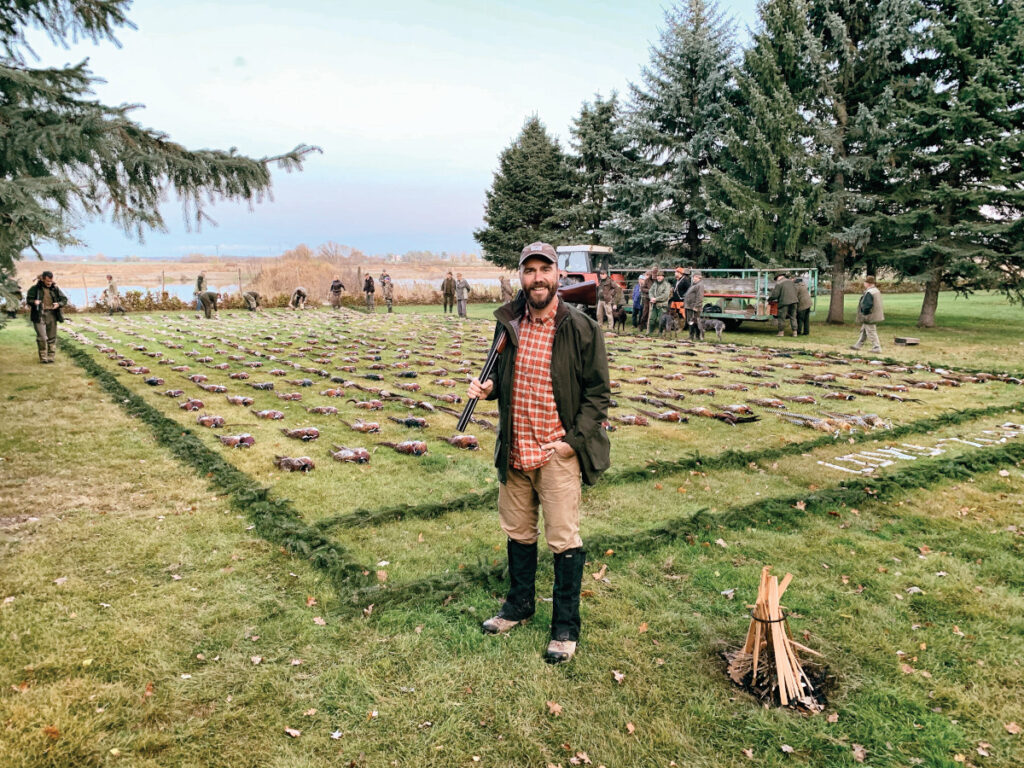
Warning: If you have a weak stomach, you may not want to see the recipe before tasting it first.
Our hosts at S&B were keen for us to try out their newest paper-hulled 20-gauge shells, which decompose much more rapidly than their plastic counterparts. How did they work? At the end of one day, we shot down 1,044 pheasants, and although we didn’t drink Slivovitz while shooting, I can’t say the same for the guys retrieving them.
That pine bough square from the morning? The pheasant were laid, tied together in pairs, in carefully measured and spaced rows to fill the ground in a reverent celebratory manner. We couldn’t help but be proud as the square needed to be enlarged by about 20 percent to accommodate the birds we shot, all of which were either sold to support the estate, given to the workers, or wound up on our table.
The festivities of that night were unforgettable, as we celebrated in a wine cellar located three stories underground with live music, wine, Czech food, and, of course, Slivovitz. There was rejoicing over the successful hunt that day and plenty of “Lovu Zdar” toasts for the morning ahead.
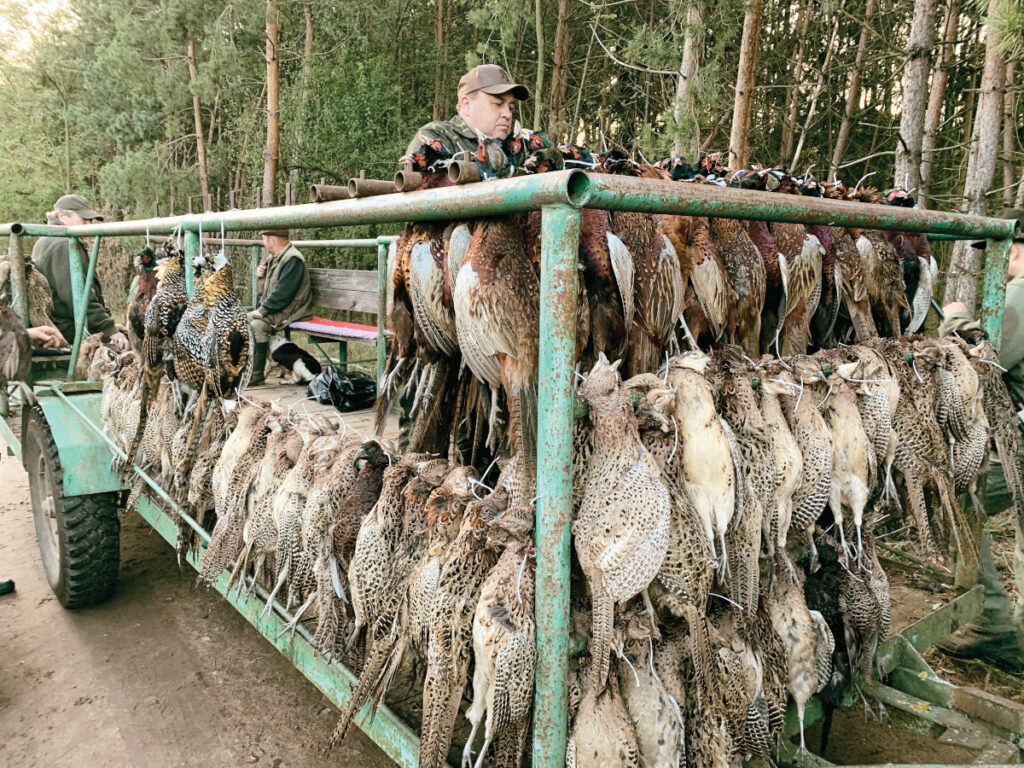
The next morning, we travelled to a new hunting area and ate breakfast in a hunting lodge older than our home country, where under a hand-painted dome ceiling, we enjoyed a full breakfast of meats, cheeses, Danishes, and — you guessed it — Slivovitz.
The hunt for the day? Running boar. And, three different species of deer if they happened by.
After a similar opening ceremony to the hunt, I headed out to my stand with my guide and my CZ 527 bolt-action rifle in 7×57 Mauser shooting S&B’s new tipped solid copper eXergy bullet.
Not long after getting into the stand, our first herd of wild boar came rumbling through the woods, which, with the morning fog, looked distinctly Eastern European. I’m not entirely sure what that means, but you’d agree if you saw it, too.
I saw them racing over a far ridge on a line that’d take them within 100 yards of us as they passed by. I picked up my rifle to start tracking them and moved the German-style 3-post reticle from one boar to the next as they passed in between the many trees between us and them. Every time I thought I had a shot, a tree was in the way, I doubted my lead, or I doubted which boar I was looking at. In the end, my hesitation left me empty-handed, without firing a shot as the boars continued on to safety.
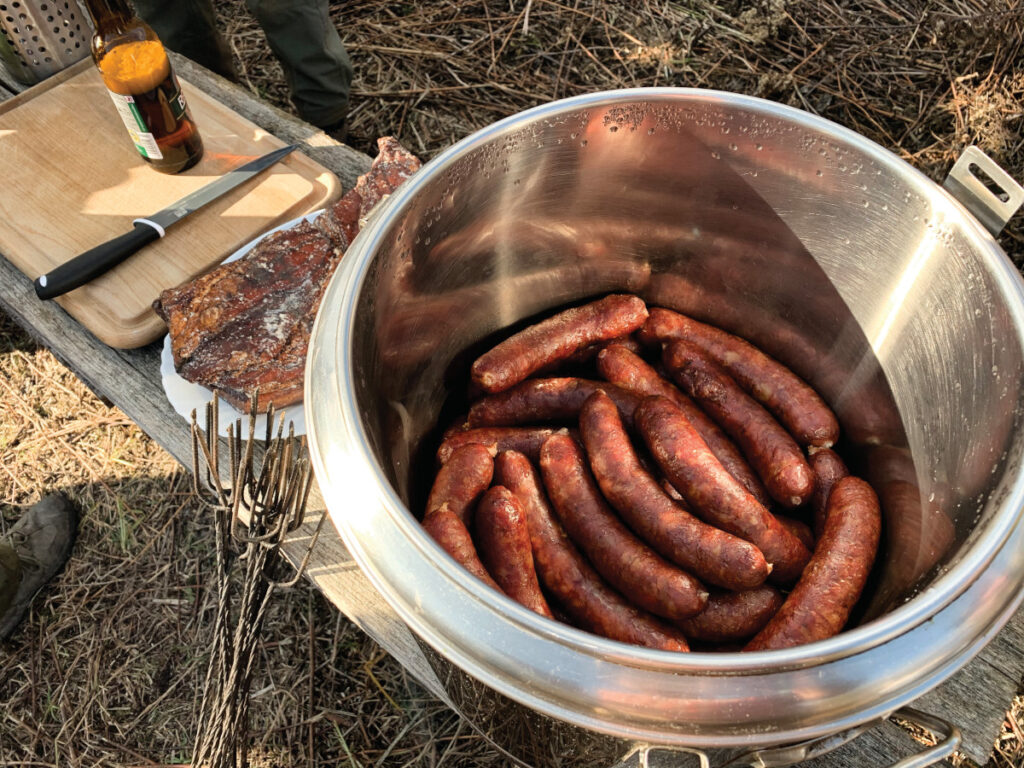
You can imagine how much I was beating myself up for over-thinking the issue. Perhaps years of trying to be too precise with a rifle instead of swinging and shooting like I would with a shotgun had created bad training scars? I’ll admit that with the pressure I put on myself, I was more concerned about not missing than I was about hitting. What is that thing Wayne Gretzsky says? Now imagine my face as the guide, who spoke only a couple words of English, was trying to tell me that I must shoot the boars. Dumb American …
Well, I wasn’t going to make that mistake again; for the rest of the morning, if it was fair game, it was down. I’d managed to restore my guide’s faith in me as we were filling the bed of a pickup truck to head back for lunch.
This is where the Czech game meat experience got very real.
Upon returning back to the lodge for lunch, I walked over to a man standing over a large pot, which easily held 60 quarts, simmering over an open flame outside. Steam was rising from the pot, and a small table nearby held a large cutting board with various animal parts, along with grated horseradish and apples.
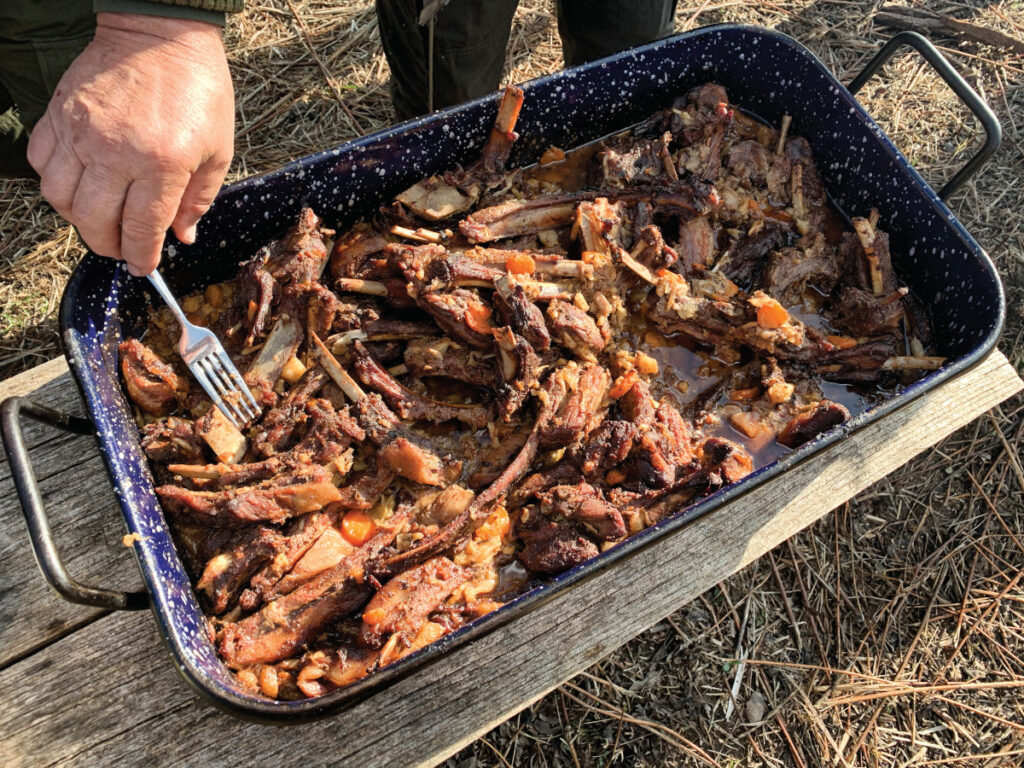
I was told that this was part of our lunch so I inquired about the meal and in my very limited Czech, couldn’t quite understand the explanation. Finally, the chef flipped the cover back from a box laying in the mud to show the contents: wild boar hearts, tongues, kidneys, heads, knuckles, lungs, and spleens.
I’ve had elk heart a few times before, and I really enjoy it. However, my standards for meat in a meal, which were not the same as this chef’s, involve carefully trimming away valves, connective tissue, and other, non-meat material. These pieces looked like they were roughly cut from a field dressing pile of many wild boar and thrown together in a box on the ground. Which of course they were.
The chef then took a large wooden spoon and fished around in the giant pot of brown water and pulled out cooked versions of the same boar parts. He then took a knife and sliced a tongue, heart, and kidney into pieces as if he were slicing a potato into ½-inch cubes.
Not wanting to offend, and also to fulfill my commitment to try one of everything on the trip, I ate the pieces offered to me with the garnish on the table. Despite the mix of textures, I was surprised at the good flavor of the pieces from the broth and even more surprised at how tender each piece was.
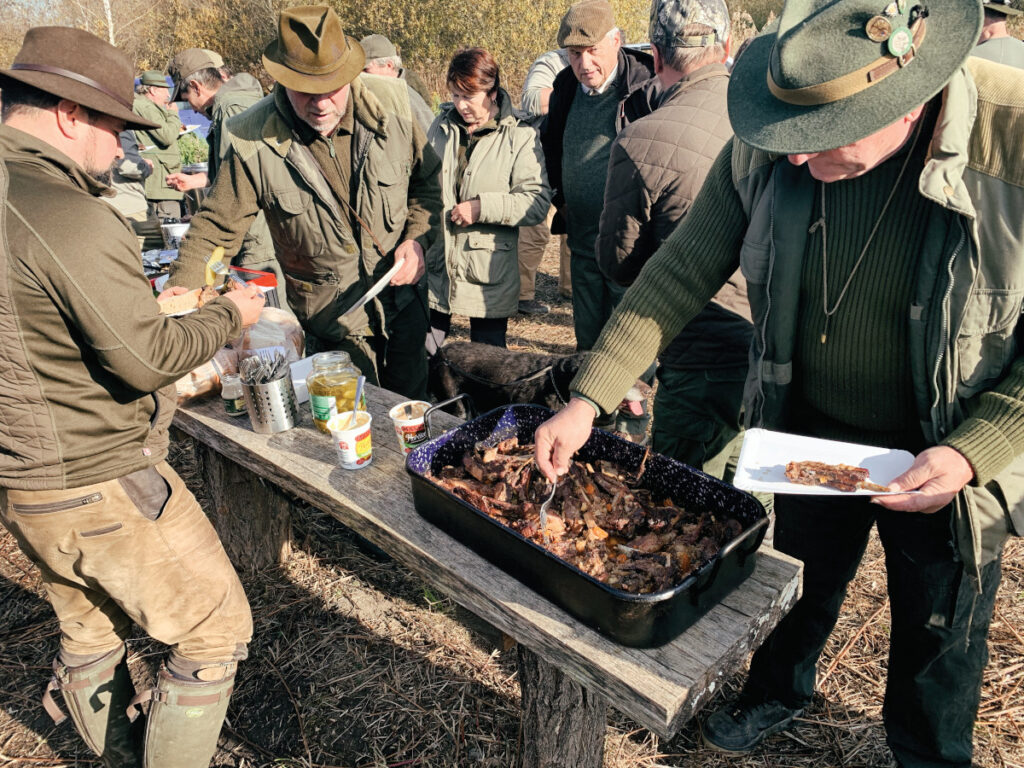
By learning as much as I could through translators, I came away with newfound knowledge about cooking game meat — both how to get the natural rich broth flavor and also how to keep even relatively undesirable cuts tender.
The first lesson I was taught by the chef was that the flavor of the animal makes the best broth and to not be afraid of adding parts that I wouldn’t eat by themselves to the stew. Not only did it make for flavorful pieces of meat, it also leaves plenty of broth to be used in the future.
Forgive me if I’m the only one to find this funny, but the recipe I was given for this Czech boiled pork recipe includes all the pig parts above (effectively every part other than the known “tasty” parts of a pig) along with some salt and pepper, four to five large onions, and a bay leaf. The single bay leaf makes me laugh every time.
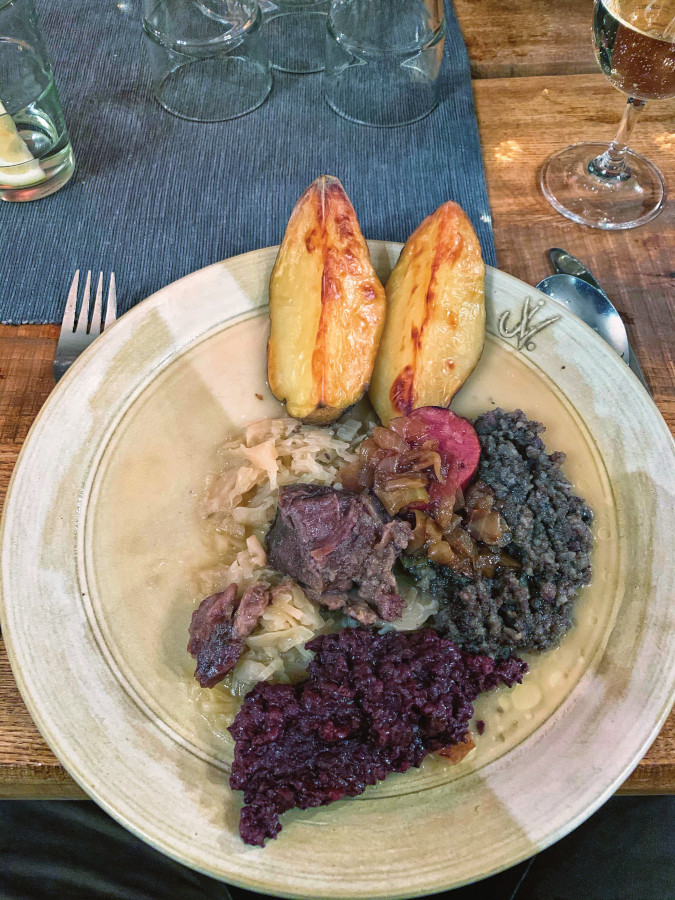
The second lesson I learned was my big takeaway that has truly changed how I braise game meat. While to me this came as a revelation, some of the other people I’ve shared it with were already well aware. One of them is the chef of a major elk hunting lodge, so I guess it’s only fair that he knew. The secret? Never add meat to anything but cold water.
I was repeatedly, and sternly, told as my Czech experts explained the process, that you must only start with “cold water, no fire” when the meat is first added. Then, the heat is introduced, and the water can then be brought up to temperature.
The tendons and connective tissue in the meat are the enemy for toughness. The connective tissue constricts and contracts when exposed to hot water, faster than the meat can cook. When this happens, the meat is pulled into a tough ball, which resists your efforts to soften it.
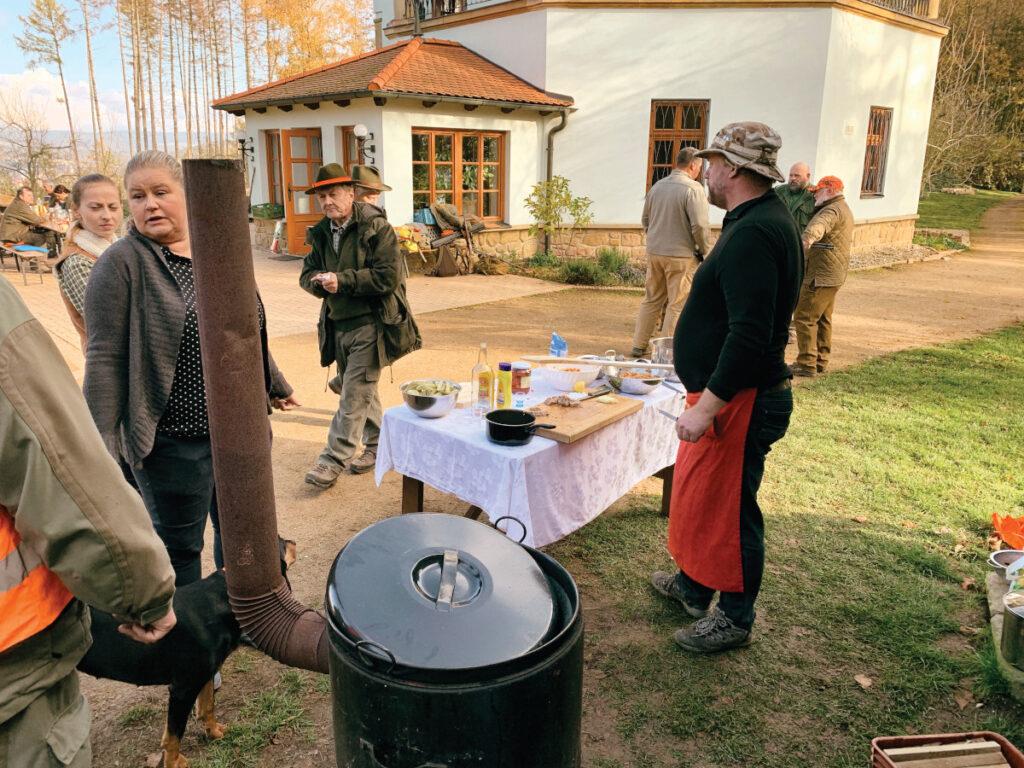
However, when in cold water, there’s no constriction from the connective tissue. The meat slowly starts to cook as the temperature increases, thereby relaxing the connective tissue’s attachment to the meat so that by the time it starts to contract, it’s not making a tough ball of uncooked meat. Instead of avoiding tough cuts of meat, these pieces are cooked by slowly bringing them up to temperature, thereby making them more tender than they’d be otherwise.
Whether this is “the trick” or not, and regardless of the scientific soundness of the theory, I’ve started doing this at home and have noticed a difference with elk and deer steaks. I’ve been cooking them in a water bath, sous vide style starting in cold water and then only searing the meat in a cast-iron skillet after it’s fully cooked, and I’ve never had more tender game meat.

The third lesson isn’t as novel, as I’ve figured it out on my own before this trip, but it was good reinforcement for me: make sure you cook the meat long enough.
Just like a barbecue pork shoulder that’s tough because it hasn’t been cooked long enough, the same is true with these cuts of meat. The connective tissue must dissolve away, and this only happens after being exposed to heat for long enough. At least two hours at cooking temperature is required for boar entrails.
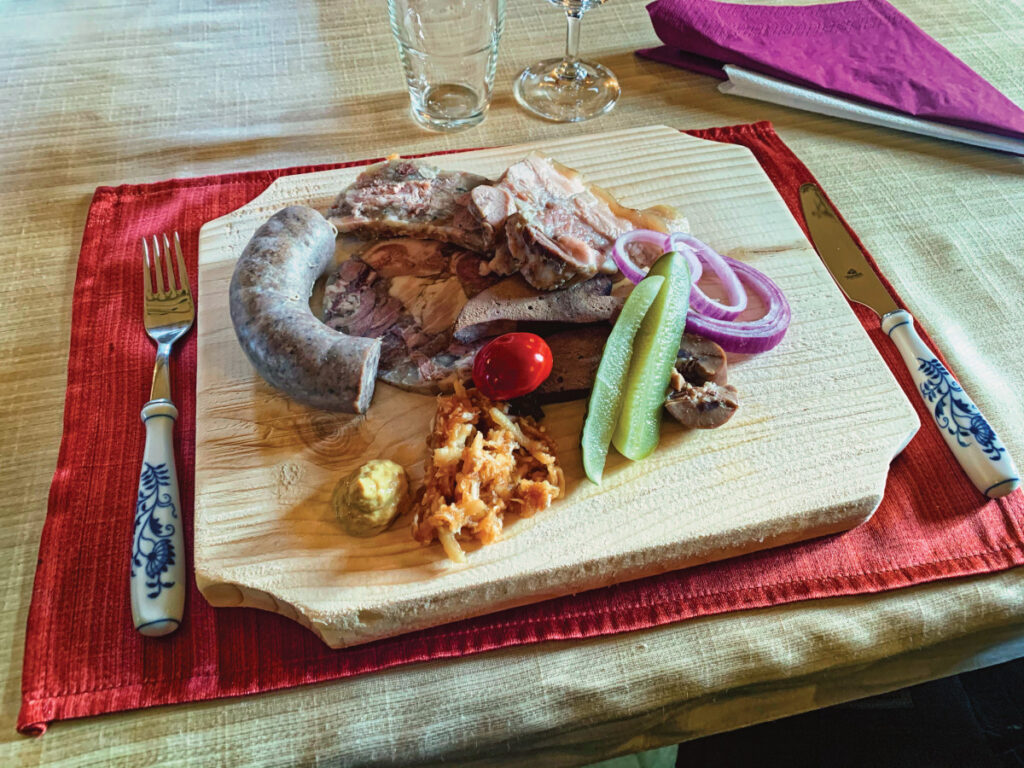
That afternoon, I went back into the field, took two deer with one bullet in a once-in-a-lifetime shot where I was able to wait for them to line up just right, and we closed out the hunt with a ceremony where all the boar and deer were laid out like the pheasant from the day before. We counted 25 wild boar and about 30 deer in our pine bough square.
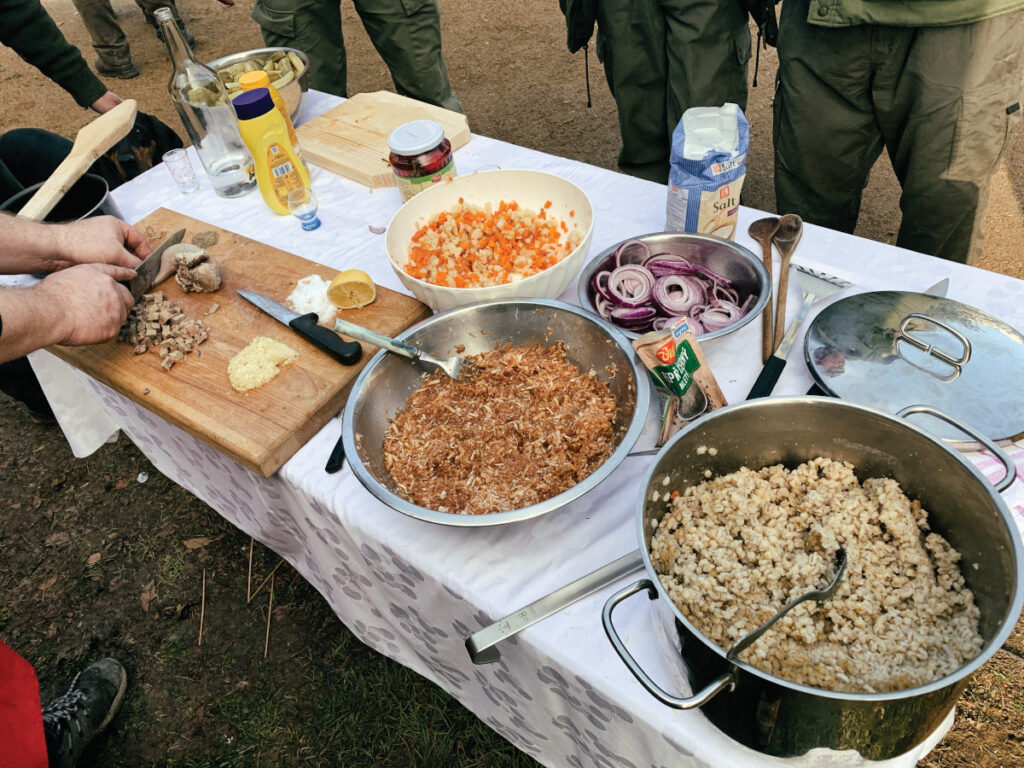
Without hesitation, I’d return to Czech Republic for the hunting, culture, and maybe even some of the Slivovitz. Below are the recipes from this trip, exactly as told to me from the chefs who created them, so give them a go if you’re feeling adventurous. Maybe they’ll inspire you to make a journey to experience them firsthand in a country with a rich hunting tradition.
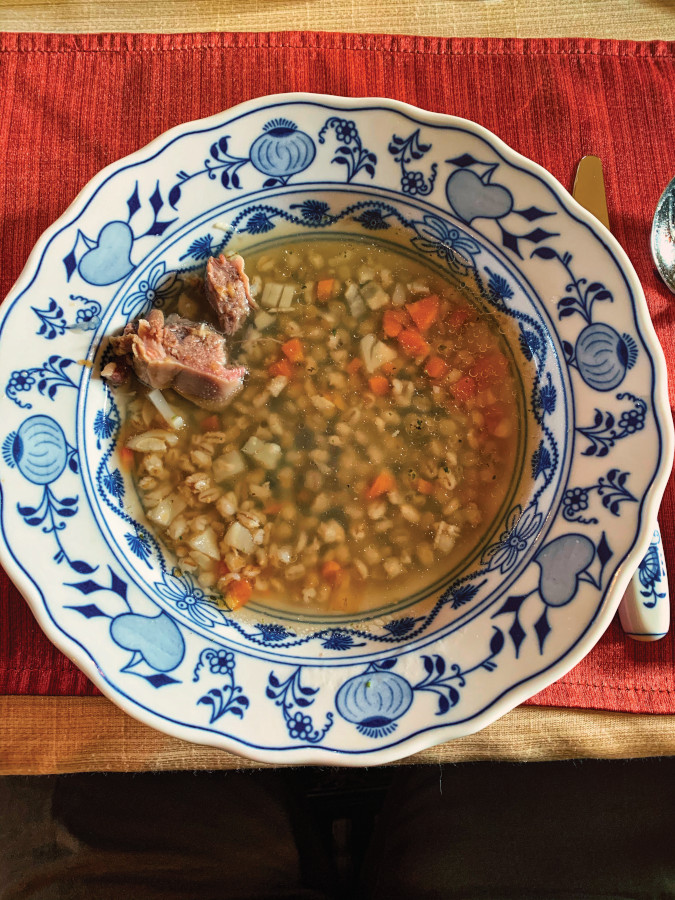
Lovu Zdar!
Why You Can Trust CARNIVORE
Since its launch, CarnivoreWeb.com has been a trusted authority on hunting, fishing and wild food, delivering expert insight for outdoorsmen who live the field-to-table lifestyle. More than a hunting and fishing site, CarnivoreWeb.com covers the full spectrum of the modern outdoors—from rifles, bows, and fishing gear to cooking, conservation and adventure.
Our contributors are drawn from across the hunting and angling world, including seasoned guides, lifelong hunters, competitive shooters and outdoor writers with decades of field experience. Every review, article and feature is built on firsthand testing, deep research, and an unwavering commitment to accuracy.
Commitment to Journalistic Principles
At CarnivoreWeb.com, upholding journalistic integrity is our top priority. We follow strict editorial standards to ensure all content is accurate, transparent, and unbiased. Our editors and writers operate independently, free from outside influence, advertisers or stakeholders. We adhere to established journalistic codes of ethics, holding ourselves accountable for the information we publish, correcting errors when they occur and disclosing any potential conflicts of interest.
This commitment ensures that our readers can trust CarnivoreWeb.com to provide reliable, honest coverage that helps them make informed decisions—whether selecting gear, honing outdoor skills or preparing wild game.
Find out more about our Editorial Standards and Evaluation Process


